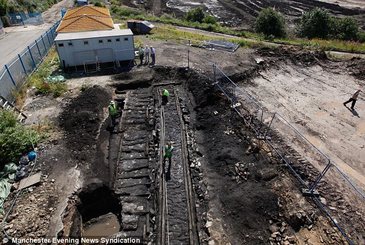An excavation on the banks of the Tyne unearthed a stretch of waggonway which is more than 200 years old, making it the earliest surviving example of the standard-gauge railway.
The discovery was originally part of a network which linked the ports of the North East with collieries in Tyneside and Northumberland in the late 18th century.
That depression would have been filled with water where coal wagons' wooden wheels were rested to stop them drying out and cracking. In the middle of the loop is a stone elevation where the horse pulling the waggon would have stood. It is the first time such a 'Watering Pond' has been recorded, although previously known from maps.







 RSS Feed
RSS Feed
